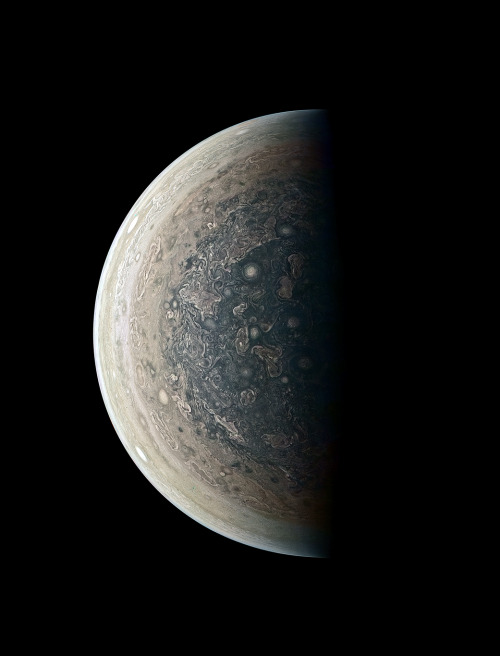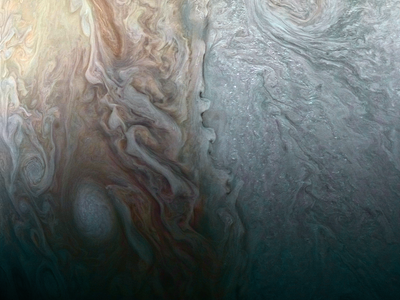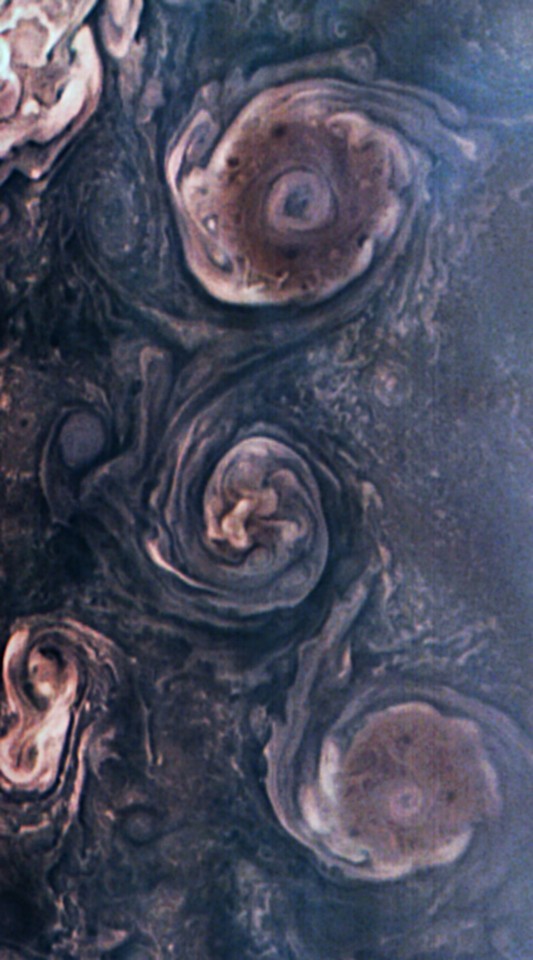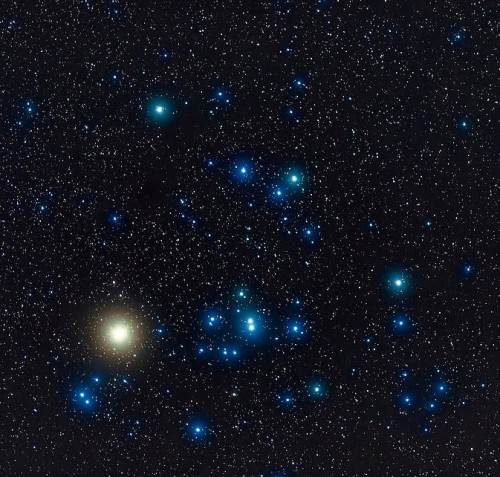Leedsichthys Is A Giant Member Of The Pachycormidae, An Extinct Group Of Mesozoic Bony Fish, That Lived

Leedsichthys is a giant member of the Pachycormidae, an extinct group of Mesozoic bony fish, that lived in the oceans of the Middle Jurassic period. The first remains of Leedsichthys were identified in the nineteenth century. Leedsichthys fossils have been found in England, France, Germany and Chile. Along with its close pachycormid relatives Bonnerichthys and Rhinconichthys, Leedsichthys is part of a lineage of large-sized filter-feeders who swam the Mesozoic seas for over 100 million years, from the middle Jurassic until the end of the Cretaceous period. Pachycormids might represent an early branch of Teleostei, the group most modern bony fishes belong to; in that case Leedsichthys is the largest known teleost fish.
Leedsichthys fossils have been difficult to interpret, because the skeletons were not completely made of bone. Large parts consisted of cartilage that did not fossilise. On several occasions the enigmatic large partial remains have been mistaken for stegosaurian dinosaur bones. As the vertebrae are among the parts that have not been preserved, it is hard to determine the total body length. Estimates have varied wildly. At the beginning of the twentieth century a length of nine metres was seen as plausible, but by its end Leedsichthys was sometimes claimed to have been over thirty metres long. Recent research has lowered this to about sixteen meters for the largest individuals. Skull bones have been found indicating that Leedsichthys had a large head with bosses on the skull roof. Fossilised bony finrays show large elongated pectoral fins and a tall vertical tail fin. The gill arches were lined by gill rakers, equipped by a unique system of delicate bone plates, that filtered plankton from the sea water, the main food source.
I really wish people would jump on the marine exploration bandwagon as much as space exploration.
More Posts from Starry-shores and Others

I had a really stupid idea and had to paint it for a friend.
Ultra-Close Orbits of Saturn = Ultra-Cool Science
On Sept. 15, 2017, our Cassini spacecraft ended its epic exploration of Saturn with a planned dive into the planet’s atmosphere–sending back new science to the very last second. The spacecraft is gone, but the science continues!

New research emerging from the final orbits represents a huge leap forward in our understanding of the Saturn system – especially the mysterious, never-before-explored region between the planet and its rings. Some preconceived ideas are turning out to be wrong while new questions are being raised. How did they form? What holds them in place? What are they made of?

Six teams of researchers are publishing their work Oct. 5 in the journal Science, based on findings from Cassini’s Grand Finale. That’s when, as the spacecraft was running out of fuel, the mission team steered Cassini spectacularly close to Saturn in 22 orbits before deliberately vaporizing it in a final plunge into the atmosphere in September 2017.

Knowing Cassini’s days were numbered, its mission team went for gold. The spacecraft flew where it was never designed to fly. For the first time, it probed Saturn’s magnetized environment, flew through icy, rocky ring particles and sniffed the atmosphere in the 1,200-mile-wide (2,000-kilometer-wide) gap between the rings and the cloud tops. Not only did the engineering push the spacecraft to its limits, the new findings illustrate how powerful and agile the instruments were.
Many more Grand Finale science results are to come, but today’s highlights include:
Complex organic compounds embedded in water nanograins rain down from Saturn’s rings into its upper atmosphere. Scientists saw water and silicates, but they were surprised to see also methane, ammonia, carbon monoxide, nitrogen and carbon dioxide. The composition of organics is different from that found on moon Enceladus – and also different from those on moon Titan, meaning there are at least three distinct reservoirs of organic molecules in the Saturn system.

For the first time, Cassini saw up close how rings interact with the planet and observed inner-ring particles and gases falling directly into the atmosphere. Some particles take on electric charges and spiral along magnetic-field lines, falling into Saturn at higher latitudes – a phenomenon known as “ring rain.” But scientists were surprised to see that others are dragged quickly into Saturn at the equator. And it’s all falling out of the rings faster than scientists thought – as much as 10,000 kg of material per second.

Scientists were surprised to see what the material looks like in the gap between the rings and Saturn’s atmosphere. They knew that the particles throughout the rings ranged from large to small. They thought material in the gap would look the same. But the sampling showed mostly tiny, nanograin- and micron-sized particles, like smoke, telling us that some yet-unknown process is grinding up particles. What could it be? Future research into the final bits of data sent by Cassini may hold the answer.

Saturn and its rings are even more interconnected than scientists thought. Cassini revealed a previously unknown electric current system that connects the rings to the top of Saturn’s atmosphere.

Scientists discovered a new radiation belt around Saturn, close to the planet and composed of energetic particles. They found that while the belt actually intersects with the innermost ring, the ring is so tenuous that it doesn’t block the belt from forming.

Unlike every other planet with a magnetic field in our Solar System, Saturn’s magnetic field is almost completely aligned with its spin axis. Think of the planet and the magnetic field as completely separate things that are both spinning. Both have the same center point, but they each have their own axis about which they spin. But for Saturn the two axes are essentially the same – no other planet does that, and we did not think it was even possible for this to happen. This new data shows a magnetic-field tilt of less than 0.0095 degrees. (Earth’s magnetic field is tilted 11 degrees from its spin axis.) According to everything scientists know about how planetary magnetic fields are generated, Saturn should not have one. It’s a mystery physicists will be working to solve.

Cassini flew above Saturn’s magnetic poles, directly sampling regions where radio emissions are generated. The findings more than doubled the number of reported crossings of radio sources from the planet, one of the few non-terrestrial locations where scientists have been able to study a mechanism believed to operate throughout the universe. How are these signals generated? That’s still a mystery researchers are looking to uncover.
For the Cassini mission, the science rolling out from Grand Finale orbits confirms that the calculated risk of diving into the gap – skimming the upper atmosphere and skirting the edge of the inner rings – was worthwhile.

Almost everything going on in that region turned out to be a surprise, which was the importance of going there, to explore a place we’d never been before. And the expedition really paid off!
Analysis of Cassini data from the spacecraft’s instruments will be ongoing for years to come, helping to paint a clearer picture of Saturn.
To read the papers published in Science, visit: URL to papers
To learn more about the ground-breaking Cassini mission and its 13 years at Saturn, visit: https://www.nasa.gov/mission_pages/cassini/main/index.html
Make sure to follow us on Tumblr for your regular dose of space: http://nasa.tumblr.com.
Gamma-ray Bursts: Black Hole Birth Announcements
Gamma-ray bursts are the brightest, most violent explosions in the universe, but they can be surprisingly tricky to detect. Our eyes can’t see them because they are tuned to just a limited portion of the types of light that exist, but thanks to technology, we can even see the highest-energy form of light in the cosmos — gamma rays.
So how did we discover gamma-ray bursts?
Accidentally!

We didn’t actually develop gamma-ray detectors to peer at the universe — we were keeping an eye on our neighbors! During the Cold War, the United States and the former Soviet Union both signed the Nuclear Test Ban Treaty of 1963 that stated neither nation would test nuclear weapons in space. Just one week later, the US launched the first Vela satellite to ensure the treaty wasn’t being violated. What they saw instead were gamma-ray events happening out in the cosmos!

Things Going Bump in the Cosmos
Each of these gamma-ray events, dubbed “gamma-ray bursts” or GRBs, lasted such a short time that information was very difficult to gather. For decades their origins, locations and causes remained a cosmic mystery, but in recent years we’ve been able to figure out a lot about GRBs. They come in two flavors: short-duration (less than two seconds) and long-duration (two seconds or more). Short and long bursts seem to be caused by different cosmic events, but the end result is thought to be the birth of a black hole.

Short GRBs are created by binary neutron star mergers. Neutron stars are the superdense leftover cores of really massive stars that have gone supernova. When two of them crash together (long after they’ve gone supernova) the collision releases a spectacular amount of energy before producing a black hole. Astronomers suspect something similar may occur in a merger between a neutron star and an already-existing black hole.

Long GRBs account for most of the bursts we see and can be created when an extremely massive star goes supernova and launches jets of material at nearly the speed of light (though not every supernova will produce a GRB). They can last just a few seconds or several minutes, though some extremely long GRBs have been known to last for hours!

A Gamma-Ray Burst a Day Sends Waves of Light Our Way!
Our Fermi Gamma-ray Space Telescope detects a GRB nearly every day, but there are actually many more happening — we just can’t see them! In a GRB, the gamma rays are shot out in a narrow beam. We have to be lined up just right in order to detect them, because not all bursts are beamed toward us — when we see one it’s because we’re looking right down the barrel of the gamma-ray gun. Scientists estimate that there are at least 50 times more GRBs happening each day than we detect!

So what’s left after a GRB — just a solitary black hole? Since GRBs usually last only a matter of seconds, it’s very difficult to study them in-depth. Fortunately, each one leaves an afterglow that can last for hours or even years in extreme cases. Afterglows are created when the GRB jets run into material surrounding the star. Because that material slows the jets down, we see lower-energy light, like X-rays and radio waves, that can take a while to fade. Afterglows are so important in helping us understand more about GRBs that our Neil Gehrels Swift Observatory was specifically designed to study them!

Last fall, we had the opportunity to learn even more from a gamma-ray burst than usual! From 130 million light-years away, Fermi witnessed a pair of neutron stars collide, creating a spectacular short GRB. What made this burst extra special was the fact that ground-based gravitational wave detectors LIGO and Virgo caught the same event, linking light and gravitational waves to the same source for the first time ever!

For over 10 years now, Fermi has been exploring the gamma-ray universe. Thanks to Fermi, scientists are learning more about the fundamental physics of the cosmos, from dark matter to the nature of space-time and beyond. Discover more about how we’ll be celebrating Fermi’s achievements all year!
Make sure to follow us on Tumblr for your regular dose of space: http://nasa.tumblr.com

The Aurora Named STEVE by NASA Goddard Photo and Video
-
 starry-shores reblogged this · 4 years ago
starry-shores reblogged this · 4 years ago -
 an-abyss-called-life liked this · 4 years ago
an-abyss-called-life liked this · 4 years ago -
 pomegranatepicnic liked this · 4 years ago
pomegranatepicnic liked this · 4 years ago -
 swimmingferret reblogged this · 5 years ago
swimmingferret reblogged this · 5 years ago -
 screamintiredraccoon liked this · 5 years ago
screamintiredraccoon liked this · 5 years ago -
 drawnsheep liked this · 6 years ago
drawnsheep liked this · 6 years ago -
 myadultsandbox reblogged this · 6 years ago
myadultsandbox reblogged this · 6 years ago -
 staffbanme liked this · 7 years ago
staffbanme liked this · 7 years ago -
 matthew-d-james liked this · 8 years ago
matthew-d-james liked this · 8 years ago -
 ivewashere reblogged this · 8 years ago
ivewashere reblogged this · 8 years ago -
 stickyheart-remade liked this · 8 years ago
stickyheart-remade liked this · 8 years ago -
 fraidycat-fr liked this · 8 years ago
fraidycat-fr liked this · 8 years ago -
 altotrain reblogged this · 8 years ago
altotrain reblogged this · 8 years ago -
 dougwardus liked this · 9 years ago
dougwardus liked this · 9 years ago -
 vargaamor liked this · 9 years ago
vargaamor liked this · 9 years ago -
 ellie-sattler reblogged this · 9 years ago
ellie-sattler reblogged this · 9 years ago -
 oiyboiy-blog liked this · 9 years ago
oiyboiy-blog liked this · 9 years ago -
 berserk-al liked this · 9 years ago
berserk-al liked this · 9 years ago -
 kierkegxxrd reblogged this · 9 years ago
kierkegxxrd reblogged this · 9 years ago -
 viergacht liked this · 9 years ago
viergacht liked this · 9 years ago -
 skull-kraken reblogged this · 9 years ago
skull-kraken reblogged this · 9 years ago -
 paleo-sexual reblogged this · 9 years ago
paleo-sexual reblogged this · 9 years ago -
 newts-in-hats liked this · 9 years ago
newts-in-hats liked this · 9 years ago -
 chaifootsteps liked this · 9 years ago
chaifootsteps liked this · 9 years ago -
 pachyrhinosaurii reblogged this · 9 years ago
pachyrhinosaurii reblogged this · 9 years ago -
 dinoromana reblogged this · 9 years ago
dinoromana reblogged this · 9 years ago -
 dinoromana liked this · 9 years ago
dinoromana liked this · 9 years ago -
 puppiegrub reblogged this · 9 years ago
puppiegrub reblogged this · 9 years ago -
 puppiegrub liked this · 9 years ago
puppiegrub liked this · 9 years ago -
 chaosorganizer reblogged this · 9 years ago
chaosorganizer reblogged this · 9 years ago -
 pabloet liked this · 9 years ago
pabloet liked this · 9 years ago -
 doingoke reblogged this · 10 years ago
doingoke reblogged this · 10 years ago -
 spitfire65745 reblogged this · 10 years ago
spitfire65745 reblogged this · 10 years ago

Amateur astronomer, owns a telescope. This is a side blog to satiate my science-y cravings! I haven't yet mustered the courage to put up my personal astro-stuff here. Main blog : @an-abyss-called-life
212 posts















